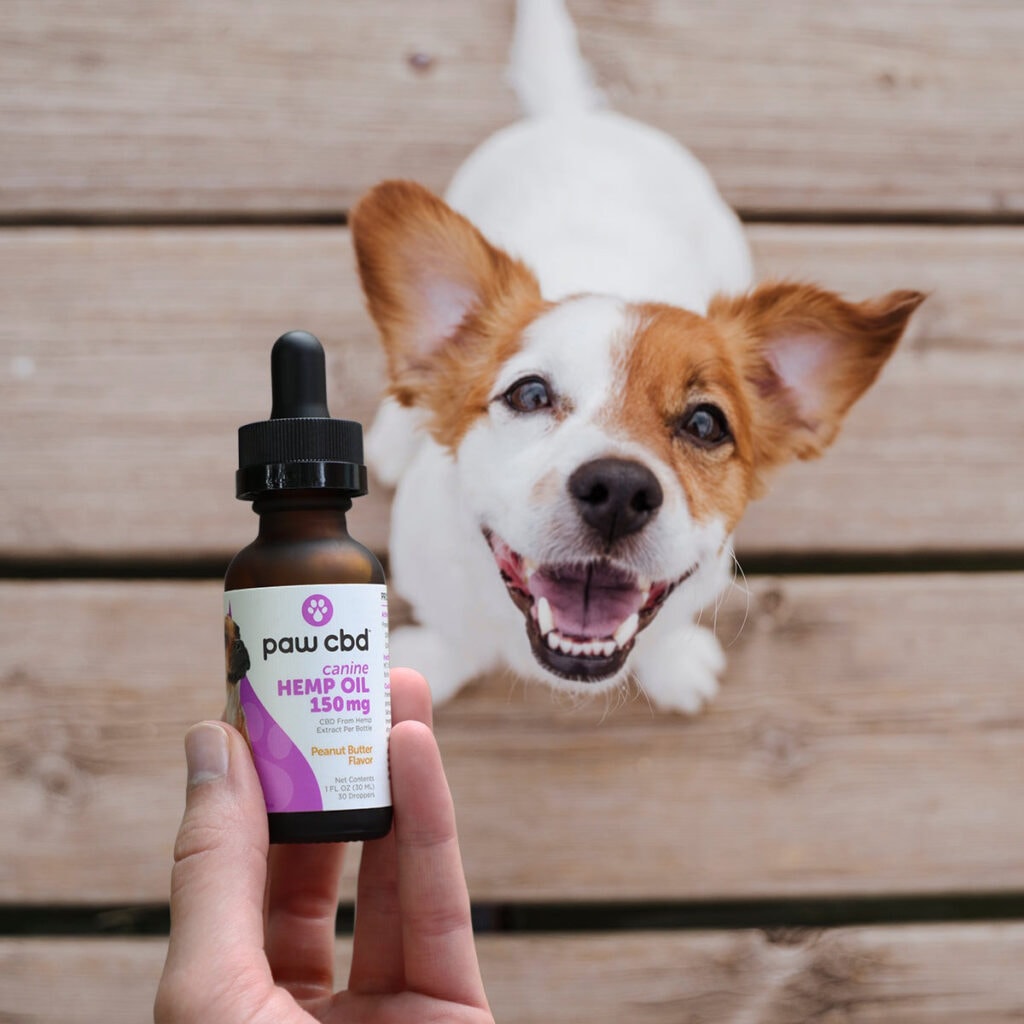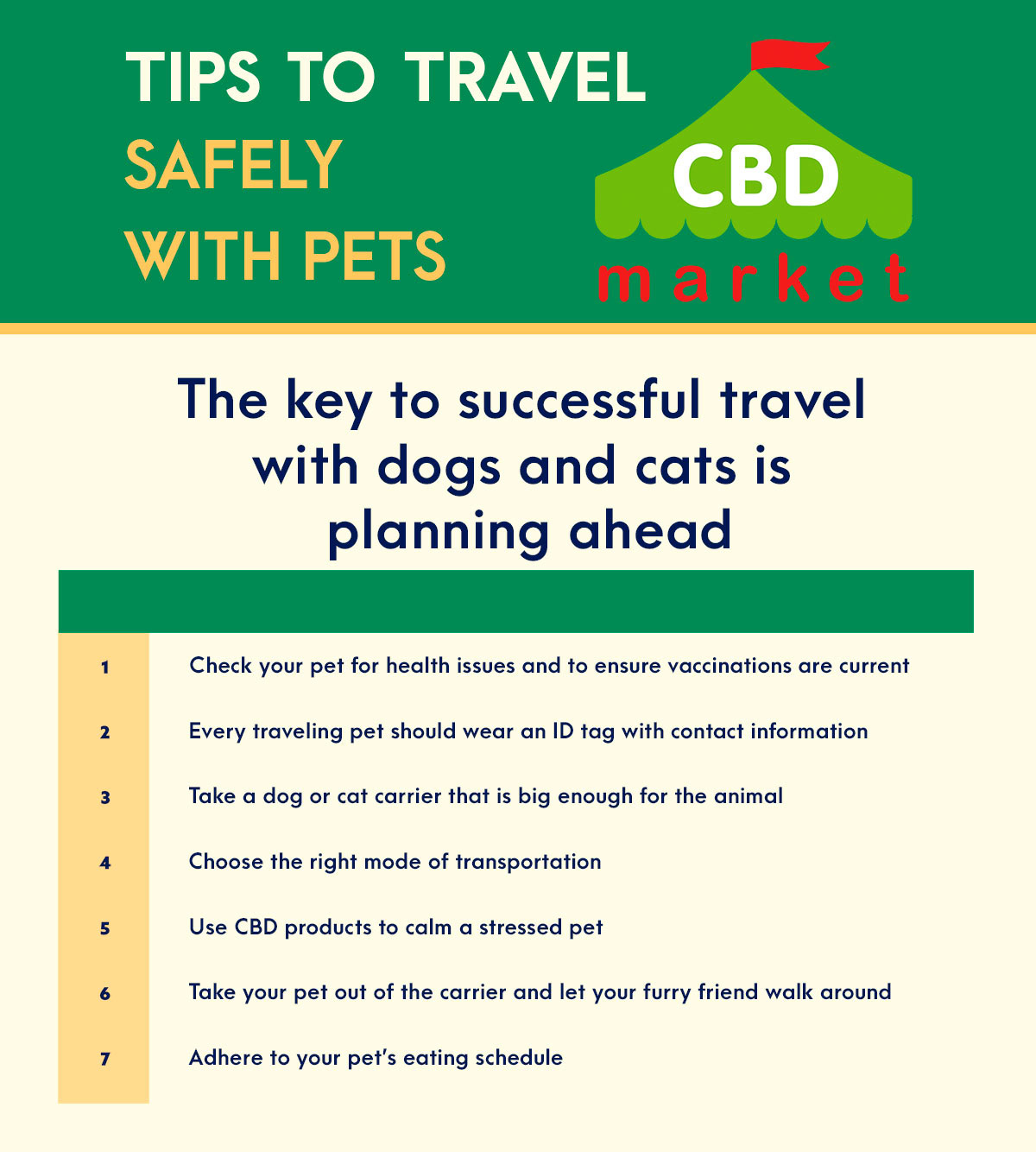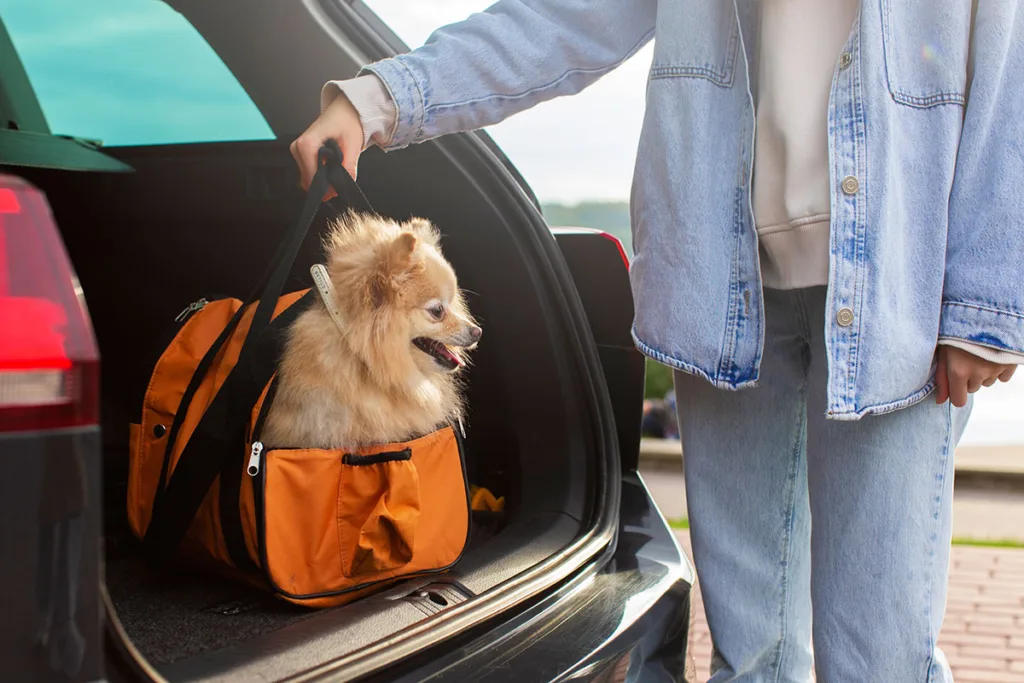Tips to Travel Safely With Pets
Summarize

People today travel with a variety of pets—dogs, cats, birds, rabbits and others. Deciding which mode of transportation is best and taking steps to ensure the safety and health of your pet is essential to a good experience. Most people bring a dog or cat on trips, so this discussion focuses on these animals.

TL;DR (Too Long; Didn’t Read):
The key to successful travel with dogs and cats is planning ahead. Tips for traveling with dogs or cats include microchipping your pet, carrying supplies like food and water, identifying pet-friendly hotels, obtaining veterinarian issues proof of vaccinations, transporting the animal in the right-sized carrier, etc. Many cats and dogs become very frightened when traveling, so their owners administer CBD for pets designed to deliver calming effects.
Table of Contents
Pre-Trip Preparations
Some pre-trip preparations apply to dogs and cats when traveling by car or air.
Veterinarian
You want to let a veterinarian check your pet for health issues and to ensure vaccinations are current. The veterinarian can provide documentation proving your dog or cat is vaccinated and taking medications, if applicable. A Certificate of Health is required for air travel. Also, you can explore various methods to help calm pets and make their travel experience more comfortable.
ID Tag
Every traveling pet should wear an ID tag with contact information.
Microchip
Microchipping takes identification to the next level. It is proof of ownership, cannot be lost like a collar with and ID tag and the information is secured in a pet registry. If the ID tag has the microchip number and your phone number, the tag shows ownership without the need to contact the veterinarian.
Rest stops
If traveling by car or truck, you should map out the trip and identify where you can stop and allow your dog to go to the restroom and allow your leashed dog or cat to stretch their legs.
Hotel
Identify pet-friendly hotels. Fortunately, there are many options today. Ideally, you will harness and leash train your dog or cat while the pet is young, but that is not always possible. You should also train your pet to travel in a carrier.
Packing Essentials
Preparing ahead of time for traveling with a dog or cat will make your trip more enjoyable for you and your pet. The following is a laundry list of items to consider. Some are necessary, like proof of current vaccinations and a health certificate if traveling by air.
- Proof of vaccinations
- Health certificate
- Medications
- Adequate food
- Bottled water
- Pet treats
- Portable litter box with liners, scoop and litter for car travel
- Litter box or dog poop bags
- Food and water bowls (collapsible ones are easy to carry)
- Dog or cat carrier that is big enough for the animal.
- Dog or cat toys
- Dog car seat that is secured with a seatbelt
- Extra collar and current ID tags

A dog or cat crate is required for airline travel and is useful in a hotel room. The crate should have ventilation on both sides and allow enough room for the animal to stand, turn around and lie down. Including something comfortable helps your pet stay calm. It could be a favorite toy or a piece of clothing, for example.
Choosing the Right Mode of Transportation
Of course, air transportation is necessary if traveling overseas. When traveling in the U.S., you can use a vehicle or air transportation. Which is the suitable mode of transportation for your dog or cat? There is no right or wrong answer, but here are some tips on deciding how to travel when you have a dog or cat.
Length of the trip
If you are driving for many days, a long car trip may be overwhelming for some pets. A lot depends on the animal. A dog is more likely than a cat to manage the trip without problems.
Car space
If you are driving a compact, subcompact or sports car, it is important to consider the space available for the pet carrier or a pet in a car seat with a seatbelt. Consider how much space passengers will take if driving a full-size vehicle or truck with a cab.
Size of the pet
If a pet carrier will fit under the seat in front of you on an airplane, your pet can be “carry-on luggage.” Otherwise, larger dogs must travel in the cargo hold during air travel. Not all airlines allow cargo transport for dogs. Each airline has unique requirements. For example, United Airlines only allows pets to be carried on and does not allow cargo transportation. Alaska Airlines allows pets in a carrier that fits in front of the owner’s feet, and the pet and carrier weigh under 20 pounds.
Age and dog breed
Your dog’s age is a consideration. Some airlines will not allow the transport of puppies. Certain breeds have a short nose or are brachycephalic (have a pushed-in face), which causes breathing difficulties normally. When feeling less comfortable during travel, the breathing issues could worsen.
Time of the year
The extreme summer and winter temperatures are a consideration. Though airline cargo holds are temperature-controlled, the temperature may not be healthy for an aging animal.
Costs
There is usually an additional airline fee for flying a pet. Also, if the pet carrier is counted as a carry-on, you may have to pay an extra fee for a carry-on checked bag for yourself.
Flight schedule
If your air flight schedule requires changing planes several times, your pet will experience even more discomfort.
The Humane Society recommends driving your pet whenever possible. There is a third transportation mode option: train. Amtrak allows small dogs or cats that weigh no more than 20 pounds and are at least eight weeks old. The same considerations apply to pet carrier size, proof of animal vaccinations and health, and so on. Another option is to use a pet transport service. These services are trained to handle traveling dogs and cats. They are focused on reducing pet nervousness and ensuring your furry friend remains comfortable.

Additional Tips for Traveling with Dogs and Cats
Choosing the right mode of transportation is key to pet safety during travel, but there are some things to keep in mind. The following are some pet safety tips.
Food and water
Moist and dry pet food is considered solid food, allowed in carry-on bags when flying. It is best if the food is in unopened packages. If your dog is traveling in the cargo space, attach a small food bag to the carrier in case the flight is delayed for an extended period.
Carrier placement
To have a safe flight, a cat must remain as calm as possible. People have found different ways to keep their cats calm. One is keeping the cat carrier on your lap until airplane boarding time. Another is to give your cat a dose of a natural supplement. Dogs can also benefit from products, like CBD for pets.

Carrier reprieve
All animals need a reprieve from being in a small space for hours. If possible, in between flights, take your cat or dog out of the carrier and let your furry friend walk around on a leash. If driving, stop periodically and let your dog or cat stretch their legs. If you have a well-fitting harness and leash, your pet should not escape. However, you can also place a tracker on the harness for unfortunate escapes.
Adhere to a schedule
As much as possible, adhere to your pet’s eating schedule.
Using CBD to Calm a Frightened Pet
Some animals experience extreme discomfort while traveling. Sedatives are sometimes administered, but they are not a good option. Many veterinarians advise against using sedatives. A better alternative is CBD for pets, formulated to calm a dog or cat.
A variety of CBD products are available today that offer calming effects. There is CBD oil as well as treats for dogs and cats.
Calming oil for dogs may contain CBD plus additional natural ingredients known to promote relaxation, like melatonin and herbs like lemon balm and chamomile. There are CBD oil products that are also good for cats.
However, pet treats made with CBD and other ingredients for calming effects, like valerian root and passion flower, are ideal for travel. Can you take dog treats on a plane? Treats are solid food, so you can take them on an airplane. They are also convenient to pack in suitcases, carry in handbags and place in any section of the carrier meant to hold different items.
Research has demonstrated the positive influence of CBD in dogs during car travel and separation. In the study, dogs were given a daily dose of CBD for six months. Dogs who took the CBD were observed for behavioral changes and medical tests were administered. The dogs that were given CBD appeared more relaxed and showed fewer physical signs of discomfort, like decreased temperature and cortisol production, compared to a placebo group of dogs.
The following are some recommendations for when you know you will be traveling.
• If already giving your pet CBD, switch to CBD for pets that are formulated to calm a dog or cat
• Administer CBD oil or feed CBD treats to your dog or cat on a routine schedule before traveling for at least a month or more before the trip starts.
• Give your dog or cat a CBD dose a half hour before beginning your trip.
• Continue administering CBD to your pet every day while traveling.
The key word is “consistency” in CBD administration whether giving CBD for cats for travel or for dogs. Using CBD to calm a pet can be effective, but it is essential to approach it with care and professional guidance. Always check with your veterinarian when you know you will be traveling, and make sure CBD for pets is a good choice. Since CBD is natural, your pet can enjoy wellness benefits too.
Destination Considerations
Following are some additional tips for traveling with a dog or cat.
- Will it be a direct flight, or are there one or more flight changes in the schedule to reach your destination?
- Have you verified whether the place you want to stay is a pet-friendly hotel, Airbnb or other type of vacation rental, like an RV park?
- Does your family or friend’s home welcome dogs or cats?
- Have you verified the laws and regulations concerning pets of your final destination, whether traveling in the U.S. or internationally?
- Have you researched the CBD laws in the state or country you identified as your end destination?
- Have you identified the nearest veterinarian at your destination in case your pet experiences an emergency?
Successfully Traveling With Pets
Successfully traveling with pets is mostly a matter of planning ahead and taking precautions. You want to ensure your dog or cat is comfortable and remains calm.
Share this post


0